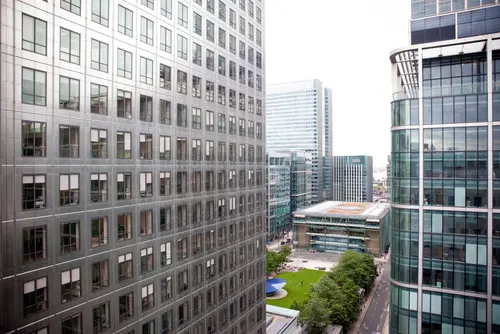Two researchers at the Environmental Energy Technologies Division (EETD) at the Lawrence Berkeley National Laboratory, in conjunction with the U.S. General Services Administration, set out to study the real-world impact of lighting control systems and the barriers that prevent commercial buildings from adopting efficient commercial lighting controls.
From occupancy sensors to dimmers, the advanced lighting controls that are available to commercial building managers and owners are numerous. It is therefore surprising that, given their energy saving benefits, only 1 percent of the commercial buildings in the U.S. use them. Why should building owners take an interest in lighting systems at all? Well, as a building owner, managing and reducing fixed operating costs is crucial. Lighting takes up 26 percent of a building's overall electricity load. That figure translates to about 10 percent of a building's operating costs annually. Implementing a lighting control system can greatly reduce those costs, saving a building money that could be reinvested in other repairs, upgrades or retrofits. The U.S. Department of Energy is sponsoring the study. With commercial buildings responsible for about 40 percent of total electricity use in the U.S., making them more efficient is a high priority.
The research
To demonstrate the exact impact of such lighting control technology, Joy Wei and Francis Rubinstein, of the EETD, selected seven federal buildings in Nevada and California – consisting of 10 test sites – to replace and install various lighting controls and energy-efficient luminaires in order to identify the best way to save lighting energy at commercial buildings already in existence. This study, called the Commercial Buildings Partnership (CPB), should help commercial buildings generate significant energy savings while keeping the cost of a lighting control system limited.
At each site, researchers replaced existing lights with energy-efficient luminaires with an individual-controlled digital dimming ballast at each workstation, allowing each employee to modify the lighting to their personal preference. Each luminaire also featured a built-in occupancy sensor, for lights to automatically dim or shut off in that workstation when workers are absent. Generally speaking, such lighting arrangements have generated increased satisfaction and an energy savings of 40 percent.
The results
While the energy savings varied from building to building, the average energy savings was 46 percent, with a low of 22 percent and a high of 66 percent. Facilities that operated 24/7 tended to reap more energy savings benefits from site-specific tuning and and timing settings than from the occupancy sensors. However, occupancy sensors used in large areas saved the most energy, specifically in common areas that are utilized by many people but are not owned by any one person.





